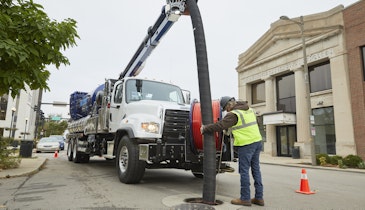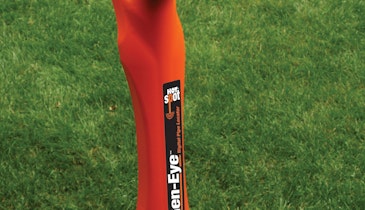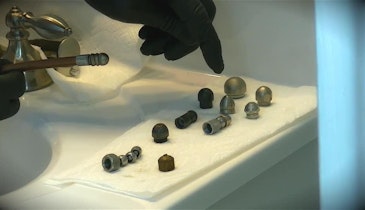
The DriveCam driver-video system from Lytx is mounted just below the rearview mirror and can record both the driver and what is happening in front of the car simultaneously.
Interested in Safety?
Get Safety articles, news and videos right in your inbox! Sign up now.
Safety + Get AlertsTechnicians at Abacus Plumbing in Houston, Texas, are now significantly less prone to distractions while driving than they were earlier this year — a trend that’s saving the company money and generally improving driver safety.
The reason? An in-cab video camera system from Lytx that identifies risky driver behaviors and alerts drivers — and management — when they occur. The cloud-based DriveCam system, which includes forward- and rear-facing video that show the road ahead and the driver, features artificial intelligence technology that detects risky behind-the-wheel behaviors such as cellphone use, eating, drinking and smoking, says Steve Darbonne, the company’s occupational health and safety manager.
“It can also detect driver fatigue and distractions based on driver actions associated with those behaviors, such as swerving outside of a lane,” Darbonne says. “If the system is 95% confident that an employee is distracted, it reports it. For example, if employee A picks up a cellphone and starts scrolling through Facebook, the camera beeps, which gives the employee a chance to self-correct. If they do, it’s all good.”
The cameras were installed in stages on all of the company’s 150 service vehicles. How effective is the system? Well, consider cellphone distractions — one of many metrics the system can track. From October 2019 through April 2020, the system recorded 2,591 such distractions across all drivers (about 370 per month). But from April through June, that number dropped to 910 distractions (or about 303 per month), Darbonne says.
The improvement trend continued from early July through early August, when the system recorded just 48 distractions. “We’re definitely bottoming out on cellphone distractions,” he says. “That’s just one and some change a day for 30 days for 150 drivers.”
In addition, the number of incidents involving improper following distance dipped 47% in July compared to June, while speeding violations also fell 47% during the same time period, he adds.
The system also helps the company coach drivers about safe-driving protocols. Employees must receive coaching if they reach a certain number of driving violations. The coaching sessions typically include watching videos of an employee’s bad driving practices, or recordable events, via the Lytx website, Darbonne says.
The coaching generally is effective; he says about 95% of employees who receive such instruction change their driving habits.
“We even had the wife of one of our employees ask why he now drives so slow (while not at work),” he says. “So we know it’s making a significant impact.”
The impact comes from more than just safer driving practices, which minimize the risk of injuries. (Vehicular accidents are a leading cause of work fatalities and lost-time accidents in the U.S.) The system also minimizes costly accident repairs, revenue lost from vehicle downtime for repairs, litigation that could arise from accidents, workers’ compensation payments and so forth, Darbonne says.
“It’s hard to quantify exactly how much money it saves the company,” he says. “But it absolutely does so. I’d say it’s in the six-figure range annually.”
Furthermore, the system protects against motorists who falsely blame Abacus employees for causing accidents, Darbonne adds. “It removes the ‘he said/she said’ situations.”
In the interest of transparency, employees were notified when the company implemented the DriveCam system. While there was pushback from some employees, which Darbonne says is completely normal, company officials pointed out that the system benefits them for the aforementioned reason: It can resolve accident disputes in which drivers otherwise couldn’t refute false allegations.
“You just have to explain it’s not only for the company’s benefit, but for the employees’ benefit, too,” he says. “If they’re involved in an accident and it’s not their fault, but another driver says it is, it can save them in the long run.”
The system is user friendly. If employees create their own Lytx accounts, they can watch videos of themselves driving and track safety metrics, too, he says.
One of the system’s most valuable components is the AI option. Before Abacus added the AI capability, the system only recorded things related to events such as hard stops. As a result, many smaller distractions went unrecorded, he says.
“It gave us a false sense of security,” Darbonne says. “Now the system scans drivers continuously and picks up those little pieces in between hard brakes, as opposed to just recording events related to vehicle movement.
“Since we started testing the AI, cellphone-distraction alerts have declined 87% overall,” he adds.
Darbonne declined to say how much it costs for a subscription to the service. But he says it’s definitely worth the money.
“Vehicle accidents had been a habitual problem, but this system holds employees accountable,” he says. “It’s a game-changer for any company that wants to change their employees’ driving habits. It’ll take some work, but eventually it’ll work for itself.”





